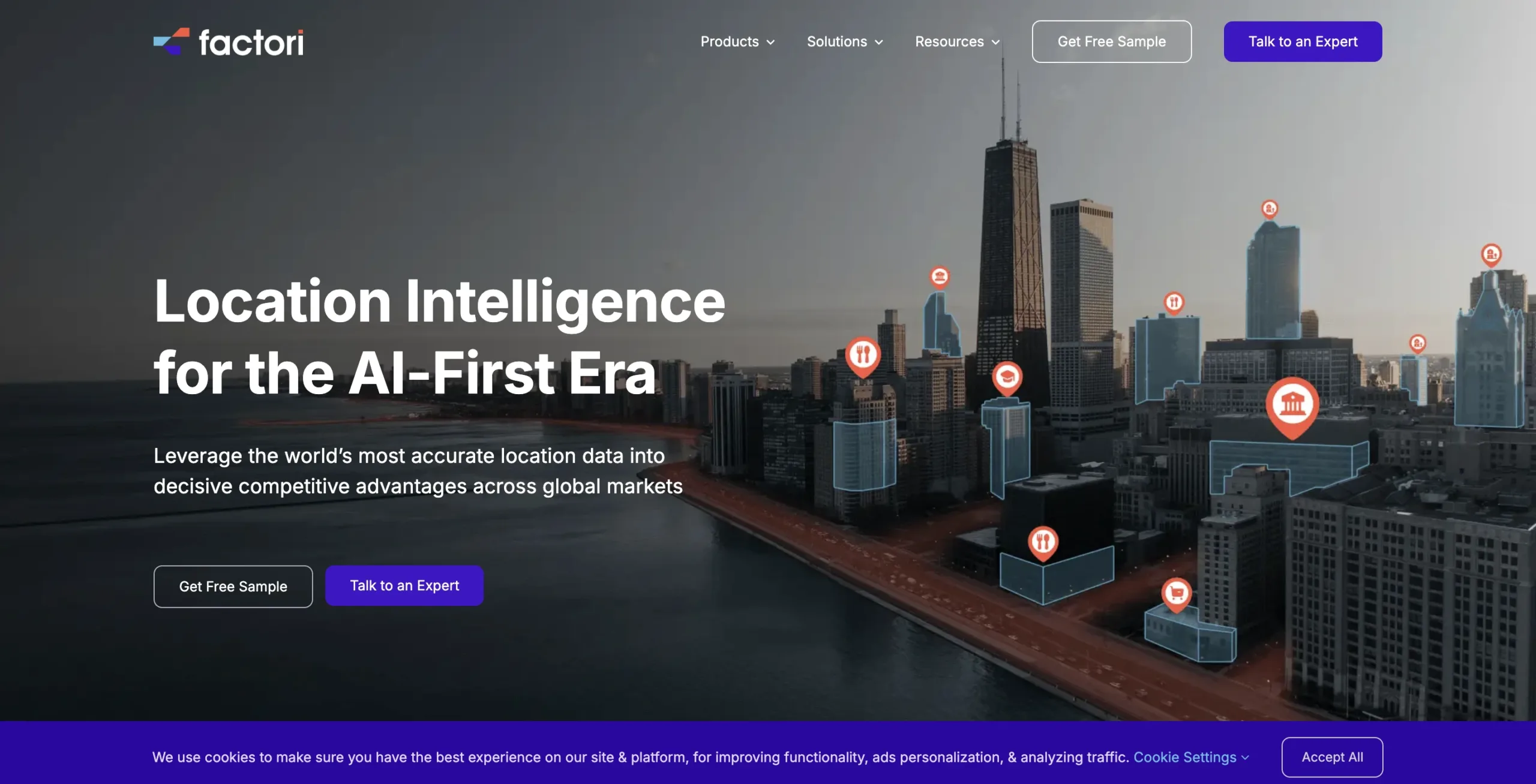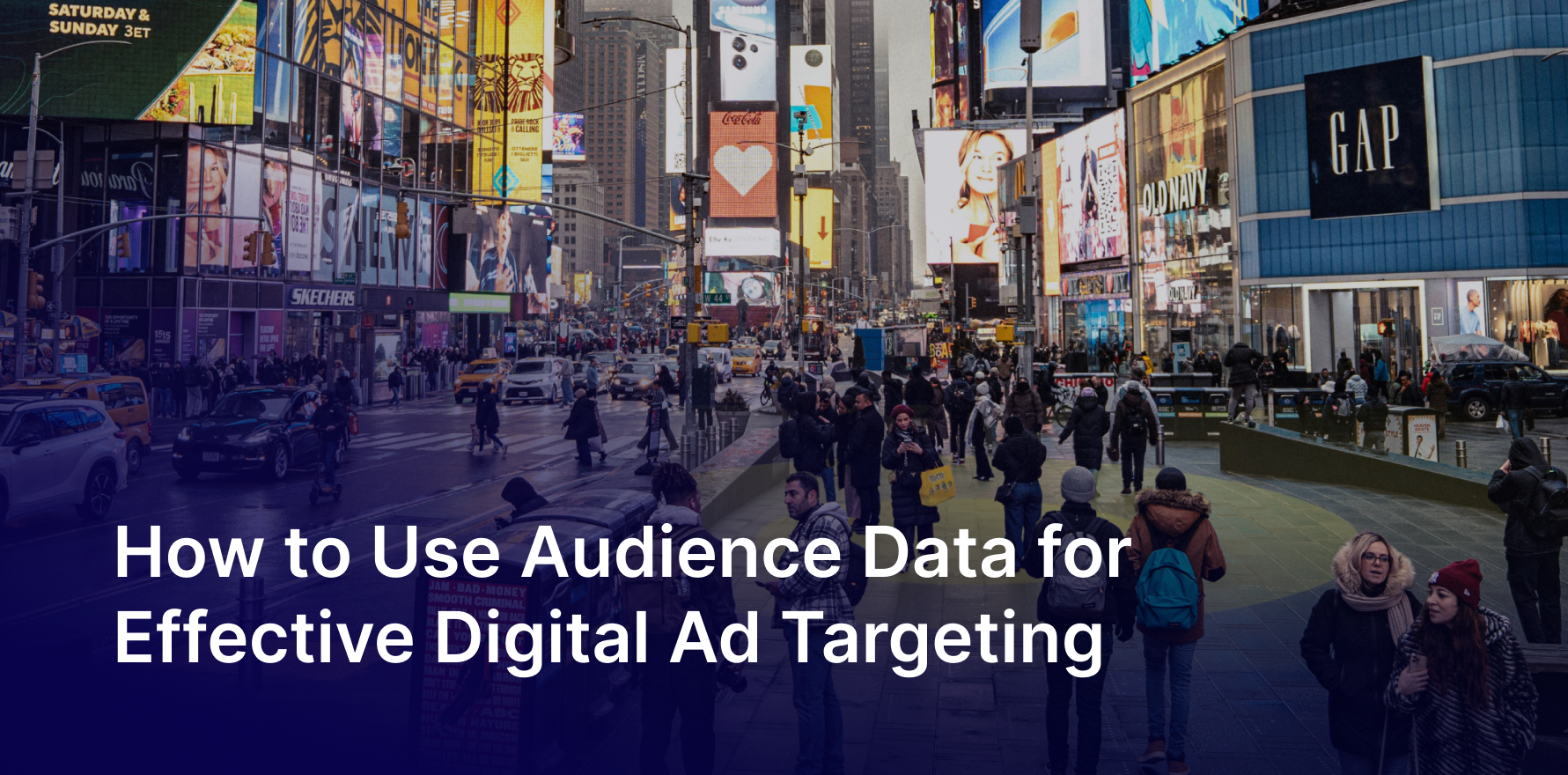In today’s data-driven world, Point of Interest (POI) data is crucial for businesses seeking to optimize their operations and improve customer experiences.
One of the most valuable types of geospatial data is point of interest (POI) data, which provides detailed information about specific physical locations.
From retail and real estate to finance and urban planning, POI data is being used to analyze neighborhoods, determine optimal facility placements, and identify promising investment opportunities.
However, the value derived from POI data largely depends on its quality. Choosing a reliable POI data provider is crucial for ensuring the data’s accuracy, relevance, and usability.
Here, we will explore the essential considerations for selecting a POI data provider and highlight the key attributes that high-quality POI data should possess.
Point of Interest (POI) data refers to specific geographic locations that are noteworthy or useful. These can range from everyday locations like grocery stores and restaurants to landmarks such as parks, tourist attractions, and hotels.
POI data includes critical information such as geographic coordinates, names, addresses, categories, and other attributes that help identify and analyze these points.
In today’s data-driven world, POI data supports many applications, from navigation and location-based services to marketing, urban planning, and emergency response. By providing detailed insights into physical locations, POI data helps businesses and organizations make informed decisions and deliver personalized experiences. Wanna know more about Poi data that helps what type of industries along with its use cases. Check our Guide to Poi Data blog.
How to Choose POI Data Providers
Choosing a POI data provider is a strategic decision that can significantly impact your business’s ability to make informed decisions. Here are key considerations to guide your selection process:
1) Data Credibility and Reliability
a) Source Verification: Ensure the provider sources their data from credible and reliable channels. This could include direct partnerships with businesses, government databases, or other authoritative entities.
b) Update Frequency: The timeliness of data updates is critical. Frequent updates ensure the data reflects the most current state of reality, which is essential for making accurate decisions.
Accuracy and Precision: Look for providers that emphasize accuracy in their datasets. This means fewer errors and more precise location information, which is crucial for applications like delivery services or urban planning.
2) Data Coverage and Granularity
a) Geographical Coverage: Consider whether the provider’s data covers the geographic regions relevant to your business. This could range from local to global coverage depending on your needs.
b) Point Density: Assess the density of points of interest in the provider’s dataset. A higher density can offer more detailed insights, especially in urban areas with many points of interest.
3) Accessibility and Integration
a) Ease of Access: Evaluate how easily you can access and use the data. Providers should offer data in formats that are compatible with your existing systems, such as CSV files, APIs, or integration with GIS platforms.
b) Processing Requirements: Consider the level of processing required to make the data usable. The less processing needed, the faster you can derive actionable insights.
4) Use Case Alignment
a) Specific Needs: Identify your specific use cases and ensure the provider can meet those needs. Whether it’s for market analysis, site selection, or competitive analysis, the data should align with your objectives.
b) Customization Options: Check if the provider offers customization options to tailor the data to your specific requirements.
Key Attributes of POI Data Providers
The attributes included in POI data are crucial in determining its utility. Here are the essential attributes to look for:
1) Location Information
a) Address and Coordinates: Accurate street addresses and latitude/longitude coordinates are fundamental. Ideally, the dataset should provide both to ensure flexibility in usage.
b) Geospatial Data: This includes boundaries, polygons, or shapes representing the physical footprint of points of interest, which can be vital for detailed spatial analysis.
2) Contact Information
a) Name and Address: Basic contact details such as the name of the place, its mailing address, and phone number are essential.
b) Digital Presence: Information about a place’s website, social media accounts, or other online presence can provide additional context and avenues for contact.
3) Categorization
a) NAICS Codes: The North American Industry Classification System (NAICS) codes categorize businesses by type of economic activity. This standardization helps in segmenting and analyzing data.
b) Additional Tags: Beyond NAICS codes, additional tags can offer further insights into the nature of a business, such as specific services offered or types of products sold.
4) Branding and Business Information
a) Brand Name and Parent Company: Information on the brand and its parent company can help in understanding the business structure and brand reach.
b) Operational Details: Data on hours of operation, date of establishment, and closure dates (if applicable) provide context on the business lifecycle and operational status.
5) Data Quality and Completeness
a) Attribute Fill Rates: High attribute fill rates indicate that the data is comprehensive and covers a wide range of details for each point of interest.
b) Consistency and Standardization: Consistent formatting and standardization across the dataset ensure reliability and ease of use.
6) Data Usage Rights
a) Flexibility of Use: Understand the terms under which you can use the data. Some providers have restrictive terms, while others offer more flexibility, allowing data to be used in various applications.
b) Licensing and Compliance: Ensure that the data usage rights align with your business needs and comply with any legal or regulatory requirements.
Also Read: Texas Point of Interest for Business Owners
List of 5 Best POI Data Providers
1. Factori

Factori is a leading global POI data provider in the market offering advanced POI solutions and We offer data on over 200 million POIs worldwide, recognized by 300+ companies as a top data provider. Our privacy-compliant solutions help businesses make informed, competitive decisions.Using machine learning techniques, Factori identifies millions of points of interest nationwide and analyzes their performance.
Factori offers comprehensive POI data solutions. Its mission is to be the go-to external data partner for businesses aiming to gain a competitive edge in today’s AI-driven world.
Factori prioritize data security, adhere to the highest standards of privacy compliance, and provide flexible delivery options tailored to our clients’ preferences.
2. SafeGraph

SafeGraph is a provider of geospatial data, offering accurate information on over 40 million points of interest worldwide.
With some of the highest fill rates for nearly 40 attributes, nearly half of SafeGraph’s POIs include polygon-based building footprints and spatial hierarchy metadata. Their datasets are updated monthly, ensuring that organizations receive fresh, reliable data.
3. Foursquare

Foursquare updates and reinforces its global POI data through its consumer-facing applications, Foursquare City Guide and Swarm. Users can “check-in” at points of interest, contributing additions or corrections to the data.
While this voluntary process may not always enhance precision or completeness, Foursquare’s POI data remains extensive and valuable, though it lacks polygon-based building footprints.
4. Placer.ai

Placer.ai is a one of the data provider offering POI solutions. By employing advanced geofencing techniques, Placer.ai creates accurate polygons representing a POI’s perimeter. Aggregated, statistical foot traffic analytics derived from mobile device location data (stripped of personal identifiers) allow users to closely examine visitation patterns.
These analytics can be integrated with multiple datasets to provide in-depth, actionable location intelligence.
5. Precisely

Precisely is renowned for its data management tools and extensive portfolio of geospatial data. Its POI data features a granular classification system and is easily integrated with other geospatial datasets due to the PreciselyID standard for identifying locations.
However, this standard can sometimes result in duplicate entries. While Precisely offers polygon-based building footprints, it lacks spatial hierarchy metadata to indicate when certain places are within larger locations. Additionally, Precisely’s geospatial data can be quite expensive.
Future Trends in POI Data
a) Advancements in Data Collection Technologies
New technologies, such as drones, IoT devices, and satellite imagery, are enhancing the accuracy and efficiency of POI data collection. These advancements enable real-time data updates and more detailed geographic insights.
b) Integration with AI and Machine Learning
AI and machine learning analyze POI data, providing deeper insights and predictive analytics. These technologies help identify patterns, forecast trends, and automate data processing.
c) Enhanced Data Privacy Measures
New regulations and technologies are being developed to protect user privacy while utilizing POI data. Privacy-Enhancing Technologies (PETs) and stricter compliance standards are becoming essential in the data ecosystem.
d) Growing Importance in Smart Cities
POI data is becoming increasingly vital in developing smart cities, where data-driven decisions improve urban living and resource management. Innovative city initiatives use POI data to enhance transportation, energy management, public safety, and citizen services
Conclusion
In order to choose the best among the POI data providers to meet the diverse needs of your business, check for the factors related to data security, privacy compliance and flexible delivery options.
It starts with the quality of the data and customer experience which matters more for the businesses. Do try out the sample Free POI data to get the view about how it works and how many attributes it contains.
Until next time, stay tuned with Factori for more articles in the Data World.
You may also like










